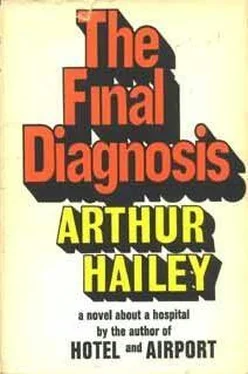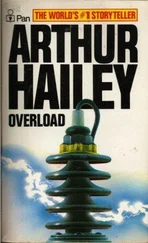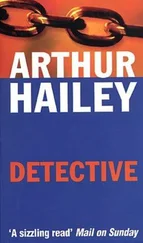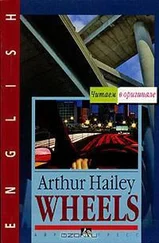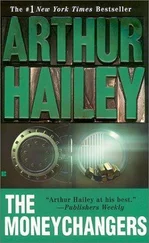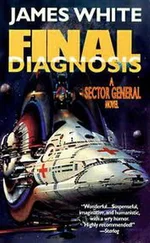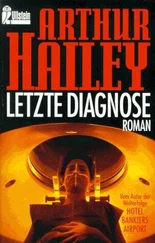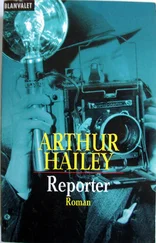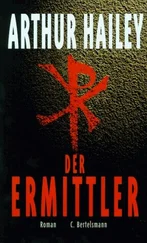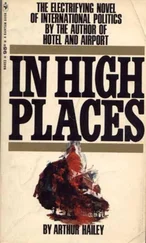Arthur Hailey - The Final Diagnosis
Здесь есть возможность читать онлайн «Arthur Hailey - The Final Diagnosis» весь текст электронной книги совершенно бесплатно (целиком полную версию без сокращений). В некоторых случаях можно слушать аудио, скачать через торрент в формате fb2 и присутствует краткое содержание. Жанр: Триллер, на английском языке. Описание произведения, (предисловие) а так же отзывы посетителей доступны на портале библиотеки ЛибКат.
- Название:The Final Diagnosis
- Автор:
- Жанр:
- Год:неизвестен
- ISBN:нет данных
- Рейтинг книги:4 / 5. Голосов: 1
-
Избранное:Добавить в избранное
- Отзывы:
-
Ваша оценка:
- 80
- 1
- 2
- 3
- 4
- 5
The Final Diagnosis: краткое содержание, описание и аннотация
Предлагаем к чтению аннотацию, описание, краткое содержание или предисловие (зависит от того, что написал сам автор книги «The Final Diagnosis»). Если вы не нашли необходимую информацию о книге — напишите в комментариях, мы постараемся отыскать её.
The Final Diagnosis — читать онлайн бесплатно полную книгу (весь текст) целиком
Ниже представлен текст книги, разбитый по страницам. Система сохранения места последней прочитанной страницы, позволяет с удобством читать онлайн бесплатно книгу «The Final Diagnosis», без необходимости каждый раз заново искать на чём Вы остановились. Поставьте закладку, и сможете в любой момент перейти на страницу, на которой закончили чтение.
Интервал:
Закладка:
The girls murmured, “Yes, sir,” or, “Yes, Doctor.”
Pearson nodded. “Then I will explain that I am Dr. Pearson, the pathologist of this hospital. These gentlemen are Dr. McNeil, the resident in pathology, and Dr. Seddons, a resident in surgery, in his third year . . .” He turned to Seddons. “Am I right?”
Seddons smiled. “Quite right, Dr. Pearson.”
Pearson continued, “In his third year of residency, and who is favoring us with a spell of duty in Pathology.” He glanced at Seddons. “Dr. Seddons will shortly qualify to practice surgery and be released upon an unsuspecting public.”
Two of the girls giggled; the others smiled. Seddons grinned; he enjoyed this. Pearson never missed an opportunity to take a dig at surgeons and surgery, probably with good reason—in forty years of pathology the old man must have uncovered a lot of surgical bloopers. He glanced across at McNeil. The resident was frowning. He doesn’t approve, Seddons thought. Mac likes his pathology straight. Now Pearson was talking again.
“The pathologist is often known as the doctor the patient seldom sees. Yet few departments of a hospital have more effect on a patient’s welfare.”
Here comes the sales pitch, Seddons thought, and Pearson’s next words proved him right.
“It is pathology which tests a patient’s blood, checks his excrements, tracks down his diseases, decides whether his tumor is malignant or benign. It is pathology which advises the patient’s physician on disease and sometimes, when all else in medicine fails”—Pearson paused, looked down significantly at the body of George Andrew Dunton, and the eyes of the nurses followed him—“it is the pathologist who makes the final diagnosis.”
Pearson paused again. What a superb actor the old man is, Seddons thought. What an unabashed, natural ham!
Now Pearson was pointing with his cigar. “I draw your attention,” he was saying to the nurses, “to some words you will find on the wall of many autopsy rooms.” Their eyes followed his finger to the framed maxim thoughtfully provided by a scientific supply house—Mortui Vivos Docent. Pearson read the Latin aloud, then translated. “The dead teach the living.” He looked down again at the body. “That is what will happen now. This man apparently”—he emphasized the word “apparently”—“died of coronary thrombosis. By autopsy we shall discover if that is true.”
At this Pearson took a deep draw on his cigar, and Seddons, knowing what was coming, moved nearer. He himself might be only a bit player in this scene, but he had no intention of missing a cue. As Pearson exhaled a cloud of blue smoke, he handed the cigar to Seddons who took it and placed it down, away from the table. Now Pearson surveyed the instruments laid out before him and selected a knife. With his eye he calculated where he would cut, then swiftly, cleanly, deeply, applied the sharp steel blade.
McNeil was watching the student nurses covertly. An autopsy, he reflected, would never be recommended viewing for the fainthearted, but even to the experienced the first incision is sometimes hard to take. Until this point the body on the table has at least borne physical resemblance to the living. But after the knife, he thought, no illusions are possible. This was not a man, a woman, a child, but merely flesh and bone, resembling life, yet not of life. This was the ultimate truth, the end to which all must come. This was the fulfillment of the Old Testament, “For dust thou art, and unto dust shalt thou return.”
Using the skill, ease, and speed of long experience, Pearson began the autopsy with a deep “Y” incision. With three strong knife strokes he brought the top two branches of the “Y” from each shoulder of the body to meet near the bottom of the chest. Then from this point he cut downward, opening the belly all the way from chest to genitals. There was a hissing, almost a tearing sound, as the knife moved and the flesh parted, revealing a layer of yellow fat beneath the surface.
Still watching the student nurses, McNeil saw that two were deathly white, a third had gasped and turned away; the other three were stoically watching. The resident kept his eye on the pale ones; it was not unusual for a nurse to keel over at her first autopsy. But these six looked as if they were going to be all right; the color was coming back to the two he had noticed, and the other girl had turned back, though with a handkerchief to her mouth. McNeil told them quietly: “If any of you want to go out for a few minutes, that’s all right. The first time’s always a bit hard.” They looked at him gratefully, though no one moved. McNeil knew that some pathologists would never admit nurses to an autopsy until the first incision had been made. Pearson, though, did not believe in shielding anyone. He felt they should see the whole thing from the beginning, and it was something McNeil agreed with. A nurse had to witness a lot of things that were tough to take—sores, mangled limbs, putrefaction, surgery; the sooner she learned to accept the sights and smells of medicine, the better for everyone, including herself.
Now McNeil slipped on his own gloves and went to work with Pearson. By this time, moving swiftly, the older man had peeled back the chest flap and, hacking the flesh loose with a larger knife, exposed the ribs. Next, using the sharp levered rib cutters, he cut his way into the rib cage, exposing pericardium and lungs. The gloves, instruments, and table were now beginning to be covered with blood. Seddons, gloved also, on his side of the table, was cutting back the lower flaps of flesh and opening the abdomen. He crossed the room for a pail and began to remove stomach and intestines, which he put into the pail after studying them briefly. The odor was beginning to be noticeable. Now Pearson and Seddons together tied off and cut the arteries so the undertaker would have no trouble when it came to embalming. Taking a small tube from a rack above the table, Seddons turned on a tap and began to siphon blood that had escaped into the abdomen and, after a nod from Pearson, did the same thing for the chest.
Meanwhile McNeil had applied himself to the head. First he made an incision across the vertex of the skull, starting slightly behind each ear and cutting above the hairline so the mark would not be visible if the body were placed on view by the dead man’s family. Then, using all the strength in his fingers, he peeled the scalp forward in one piece, so that all the flesh from the head was bunched over, the front of the face, covering the eyes. The entire skull was now exposed, and McNeil picked up the portable electric saw which was already plugged in. Before he switched it on he looked over at the student nurses to find them watching him with a mixture of incredulity and horror. Take it easy, girls, he thought; in a few minutes you’ll have seen it all.
Pearson was carefully removing the heart and lungs when McNeil applied the saw to bone. The metallic “scrunch” of the oscillating steel teeth biting into the skull cut grimly across the quiet room. Glancing up, he saw the girl with the handkerchief flinch; if she was going to vomit he hoped it wouldn’t be in here. He kept the blade cutting until the top of the skull was severed. He put down the saw. George Rinne would remove the blood from it when he cleaned all the instruments later. Now McNeil carefully pried loose the skull, exposing the soft membrane covering the brain beneath. Again he glanced at the nurses. They were standing up to it well; if they could take this they could take anything.
With the bony portion of the skull removed, McNeil took sharp scissors and opened the large vein—the superior sagittal sinus—which ran from front to rear along the center of the membrane. The blood poured out, spilling over the scissors and his fingers. It was fluid blood, he noted; there was no sign of thrombosis. He inspected the membrane carefully, then cut and lifted it clear to expose the mass of brain beneath. Using a knife, he carefully severed the brain from the spinal cord and eased it out. Seddons joined him, holding a glass jar half full of formalin, and McNeil gently lowered the brain into it.
Читать дальшеИнтервал:
Закладка:
Похожие книги на «The Final Diagnosis»
Представляем Вашему вниманию похожие книги на «The Final Diagnosis» списком для выбора. Мы отобрали схожую по названию и смыслу литературу в надежде предоставить читателям больше вариантов отыскать новые, интересные, ещё непрочитанные произведения.
Обсуждение, отзывы о книге «The Final Diagnosis» и просто собственные мнения читателей. Оставьте ваши комментарии, напишите, что Вы думаете о произведении, его смысле или главных героях. Укажите что конкретно понравилось, а что нет, и почему Вы так считаете.
